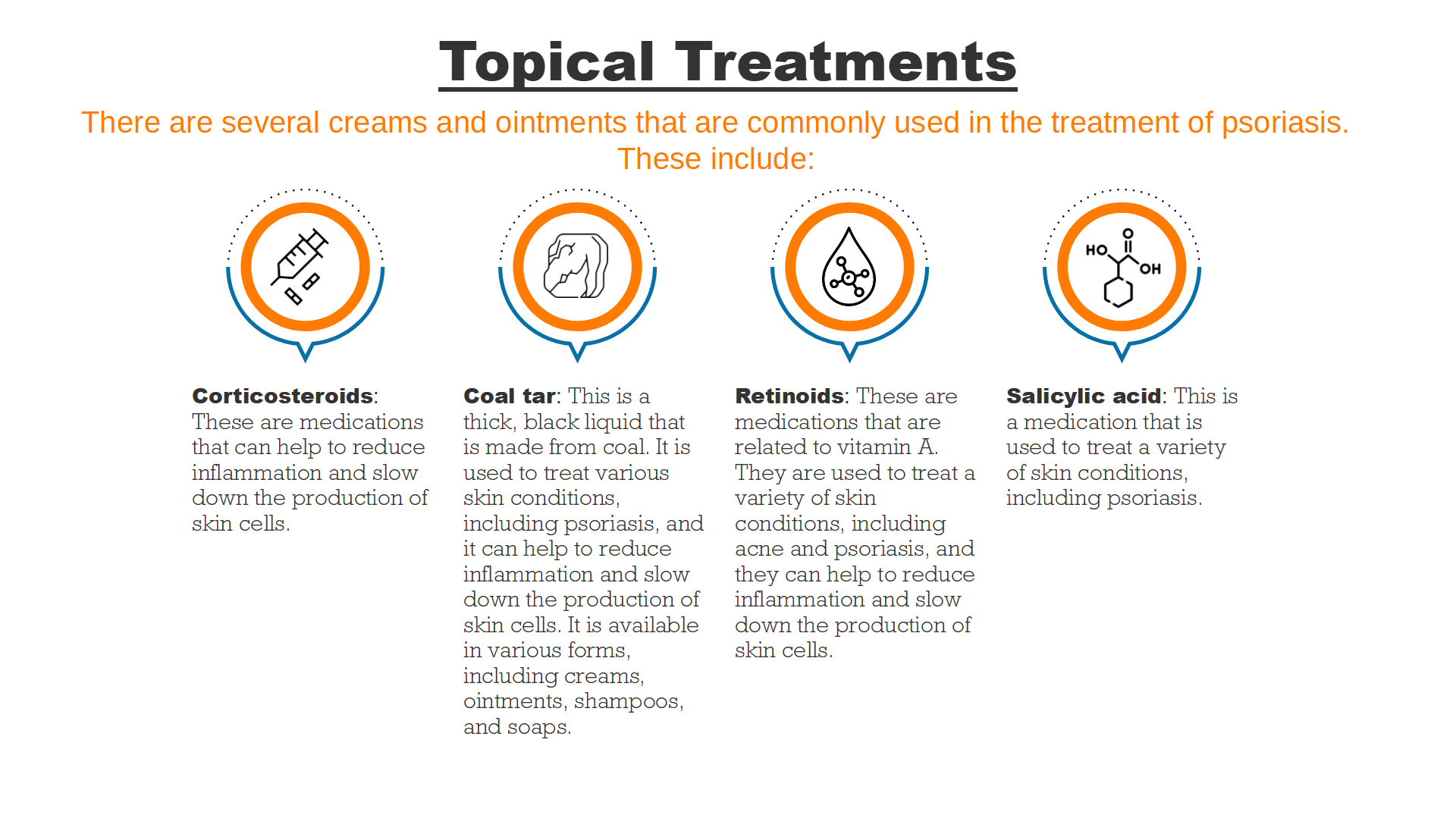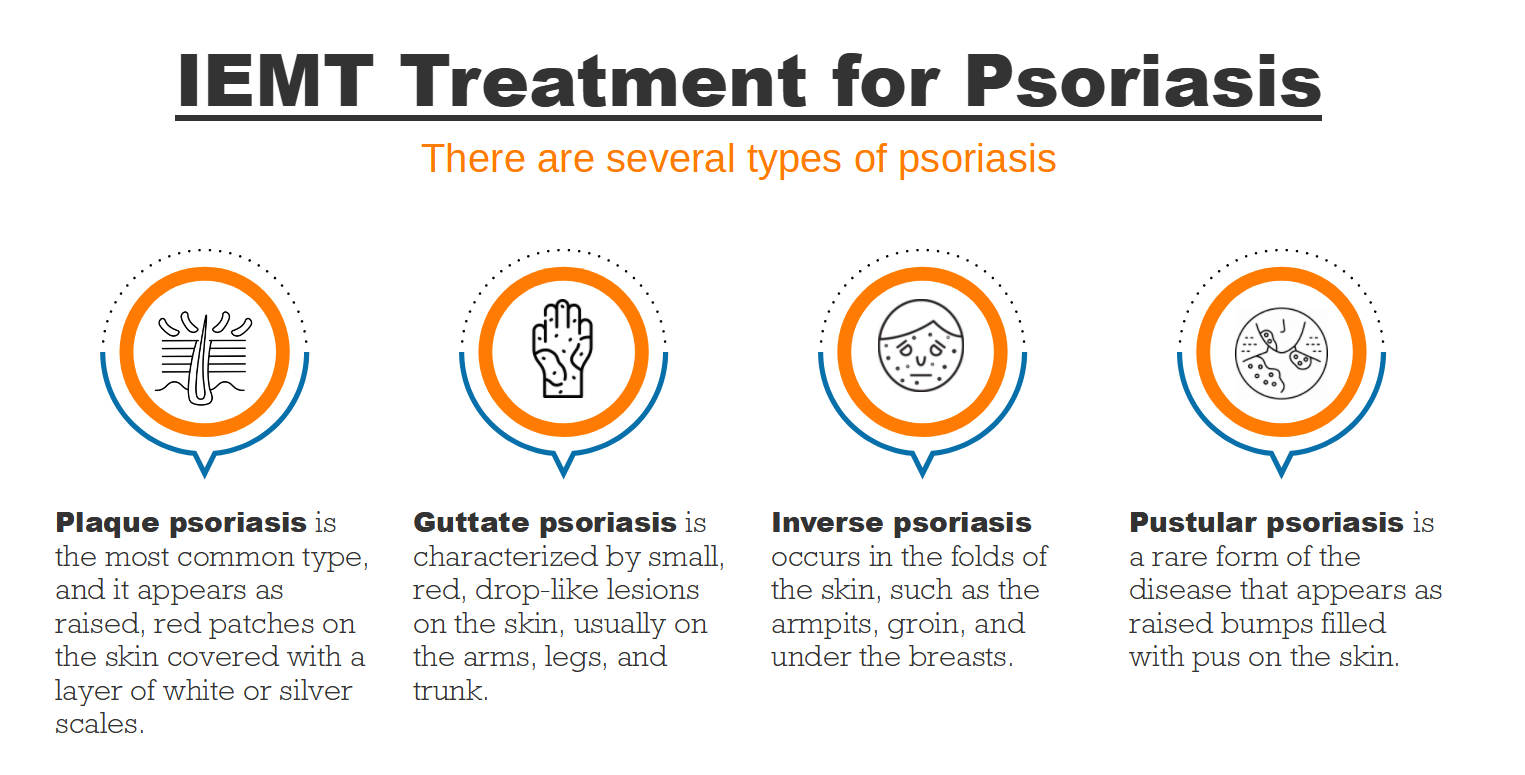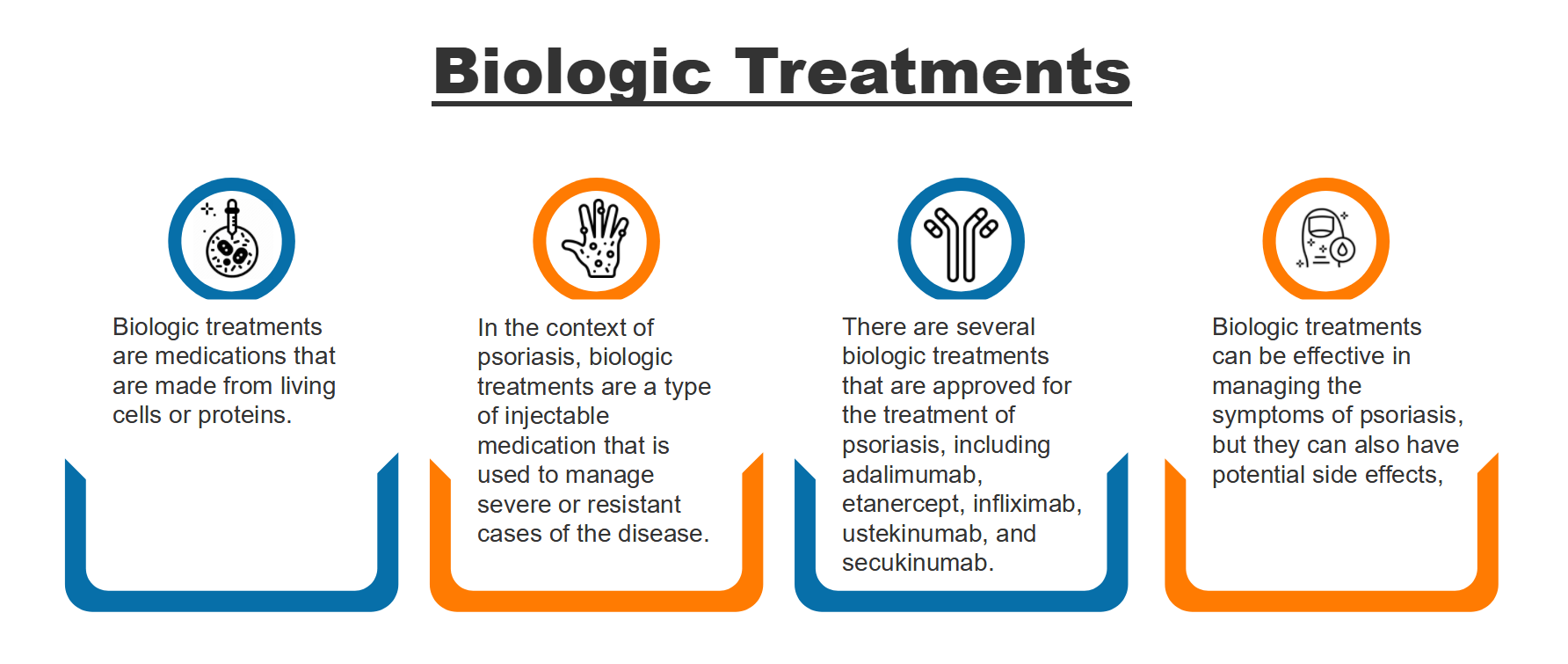IEMT Treatment for Psoriasis
A surprising observation is how IEMT has been used to successfully treat plaque psoriasis.1)2) However, it should be noted that this treatment is still experimental, still requires researched proofs, and practitioners are not permitted to offer this as a treatment.
Psoriasis is a chronic skin condition that affects millions of people worldwide. It is characterized by red, scaly patches on the skin that can be itchy, painful, and sometimes even bleeding. The exact cause of psoriasis is unknown, but it is thought to be related to an immune system problem.
There are several types of psoriasis, including plaque psoriasis, guttate psoriasis, inverse psoriasis, and pustular psoriasis.
- Plaque psoriasis is the most common type, and it appears as raised, red patches on the skin covered with a layer of white or silver scales.
- Guttate psoriasis is characterized by small, red, drop-like lesions on the skin, usually on the arms, legs, and trunk.
- Inverse psoriasis occurs in the folds of the skin, such as the armpits, groin, and under the breasts.
- Pustular psoriasis is a rare form of the disease that appears as raised bumps filled with pus on the skin.
From a medical viewpoint, there is no cure for psoriasis, but it can be managed with a variety of treatments. Topical treatments, such as creams and ointments, are often used to treat mild to moderate cases of the disease. These treatments can help to reduce inflammation and slow down the production of skin cells. More severe cases may require the use of phototherapy, which involves exposing the skin to controlled amounts of natural or artificial light. This can help to reduce inflammation and improve the appearance of the skin.
In some cases, oral or injected medications may be necessary to manage psoriasis. These medications, which include biologics and immunomodulators, work by targeting the immune system and reducing inflammation. They may be used alone or in combination with other treatments.
Topical Treatments
 There are several creams and ointments that are commonly used in the treatment of psoriasis. These include:
There are several creams and ointments that are commonly used in the treatment of psoriasis. These include:
- Corticosteroids: These are medications that can help to reduce inflammation and slow down the production of skin cells. They are available in various strengths and can be applied to the skin as a cream, ointment, or lotion.
- Coal tar: This is a thick, black liquid that is made from coal. It is used to treat various skin conditions, including psoriasis, and it can help to reduce inflammation and slow down the production of skin cells. It is available in various forms, including creams, ointments, shampoos, and soaps.
- Retinoids: These are medications that are related to vitamin A. They are used to treat a variety of skin conditions, including acne and psoriasis, and they can help to reduce inflammation and slow down the production of skin cells. They are available in various forms, including creams, ointments, and gels.
- Salicylic acid: This is a medication that is used to treat a variety of skin conditions, including psoriasis. It can help to soften and remove scales and plaques on the skin. It is available in various forms, including creams, ointments, and shampoos.
Biologic Treatments
Biologic treatments are medications that are made from living cells or proteins. They are used to treat a variety of conditions, including cancer, autoimmune disorders, and chronic inflammatory diseases.
In the context of psoriasis, biologic treatments are a type of injectable medication that is used to manage severe or resistant cases of the disease. They work by targeting specific proteins or pathways in the immune system that are involved in the development of psoriasis. By inhibiting these proteins or pathways, biologic treatments can help to reduce inflammation and slow down the production of skin cells, which can improve the symptoms of psoriasis.
There are several biologic treatments that are approved for the treatment of psoriasis, including adalimumab, etanercept, infliximab, ustekinumab, and secukinumab. These medications are usually given as an injection or infusion, and they are typically used in combination with other treatments such as topical medications or phototherapy.
Biologic treatments can be effective in managing the symptoms of psoriasis, but they can also have potential side effects, such as infections, allergic reactions, and an increased risk of certain cancers. It is important for individuals considering biologic treatment to discuss the potential risks and benefits with their healthcare provider.
Phototherapy
Phototherapy, also known as light therapy, is a treatment that involves exposing the skin to controlled amounts of natural or artificial light. It is often used to treat skin conditions such as psoriasis, eczema, and vitiligo, as well as other conditions such as seasonal affective disorder (SAD) and jaundice.
There are several different types of phototherapy, including narrowband ultraviolet (UV)B light therapy, broadband UVB light therapy, and psoralen plus UVA (PUVA) therapy. Narrowband UVB and broadband UVB therapies involve exposing the skin to UVB light, which can help to reduce inflammation and slow down the production of skin cells. PUVA therapy involves taking a photosensitizing medication called psoralen and then exposing the skin to UVA light.
Phototherapy is usually administered in a dermatologist's office or at a specialized phototherapy clinic. It is usually given two to three times per week and the treatment sessions can last anywhere from a few minutes to half an hour, depending on the type of phototherapy and the severity of the condition.
Phototherapy can be effective in managing the symptoms of certain skin conditions, but it can also have potential side effects, such as sunburn, skin cancer, and premature aging of the skin. It is important for individuals considering phototherapy to discuss the potential risks and benefits with their healthcare provider.
ICD Classification
The International Classification of Diseases (ICD) is a standardized system for classifying and coding diseases and related health problems. It is used by healthcare providers, insurance companies, and public health agencies to record and report diagnoses, procedures, and outcomes.
In the ICD, psoriasis is classified under category L40, which includes all forms of the disease. Within this category, there are several subcategories that are used to specify the type of psoriasis a person has. For example, L40.0 is plaque psoriasis, L40.1 is guttate psoriasis, L40.2 is pustular psoriasis, and L40.3 is erythrodermic psoriasis.
The ICD also includes codes for other conditions that may be related to or occur in conjunction with psoriasis, such as psoriatic arthritis (M07.3) and nail psoriasis (L40.5).
The ICD is regularly updated and revised by the World Health Organization (WHO) to ensure that it accurately reflects current medical knowledge and practice. It is used globally, with different countries and regions sometimes adapting the codes to meet their specific needs.
Conclusion
Psoriasis is a chronic skin condition that affects millions of people worldwide. It is characterized by red, scaly patches on the skin and can be managed with a variety of treatments.
Living with psoriasis can be challenging, both physically and emotionally. The condition can cause discomfort and pain, and it can also have a negative impact on a person's self-esteem and overall quality of life. It is important for individuals with psoriasis to work closely with a healthcare provider to find a treatment plan that works for them and to seek support from friends, family, and support groups.

